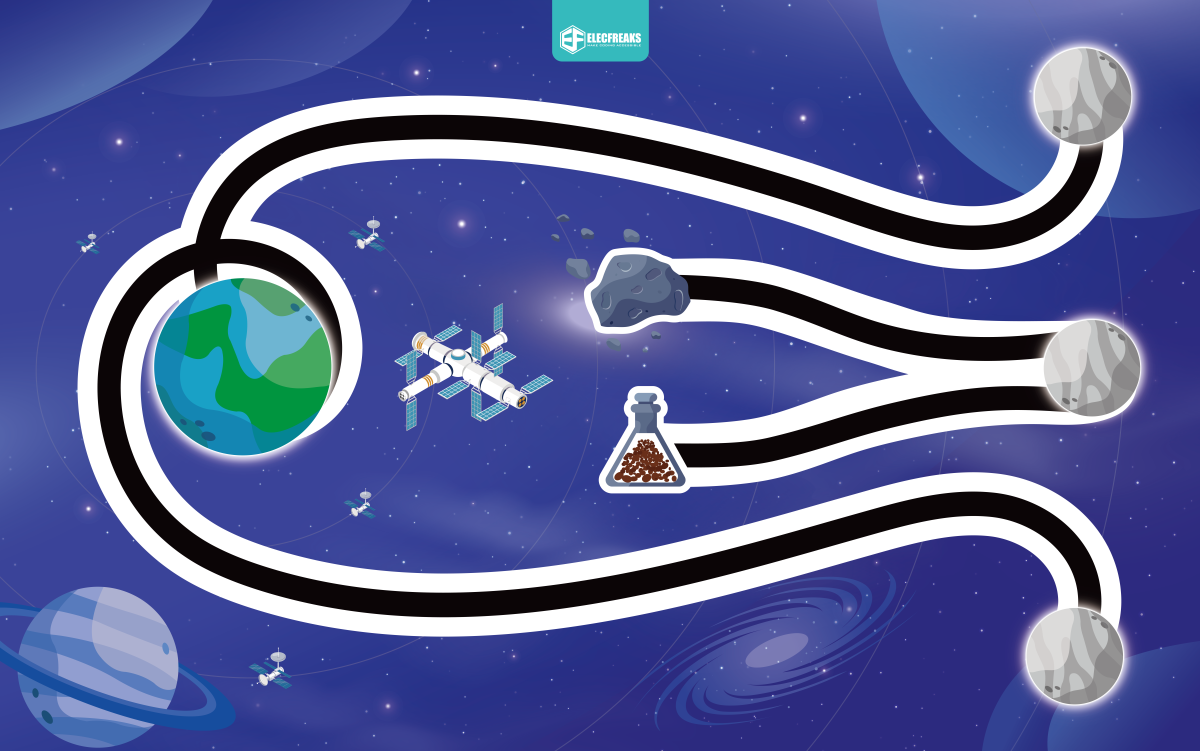space-map-introdution
Introduction to the Map
Introduction
The space map is a simulation of the entire trajectory for a lunar mission plan. It includes scenes such as the launch of the lunar rocket, operation in low Earth orbit, lunar orbit insertion, moon landing, conducting missions on the lunar surface, ascent from the moon, re-entry into Earth's atmosphere, and landing back on Earth. Additionally, it covers launching manned rockets to the International Space Station, performing experimental tasks aboard the station, and sharing experimental data on the internet for the enlightenment and education of all humanity. Through scenario-based learning on this map, students will acquire knowledge of aerospace science.

Introduction to the Lunar Mission Plan
1. Launchers
Lunar launchers are large infrastructures designed for launching manned or unmanned missions to the Moon, usually at launch sites with open views and favourable weather conditions. These launchers not only have to withstand the tremendous thrust of a rocket launch, but also need to be equipped with complex fuel storage and delivery systems, as well as a variety of test and safety equipment.

2. Near-Earth Orbit
The near-Earth orbit (NEO) plays an important role in the Moon landing programme and is the region of the orbit within a range of about 200 to 2,000 kilometres above the Earth's surface. At this stage, spacecraft are still subject to the Earth's gravity, but are sufficient for space station maintenance, satellite deployment and as a starting point for deep space exploration missions.

3. Lunar Entry Orbit
Lunar entry orbit in the lunar landing programme refers to the series of orbital manoeuvres that a spacecraft needs to perform after completing the Earth-Moon transfer in order to successfully enter an orbit around the Moon. This process is critical to achieving an eventual lunar landing

4. Mission On the Moon
Lunar missions on the Moon Landing Programme cover a complex range of operations from lunar orbit to landing on the lunar surface, lunar surface activities, sample collection and return. These missions are intended to enable intensive human exploration of the Moon, scientific research and to lay the foundation for long-term habitation and use of the Moon's resources.

5. Return orbit
A return orbit in the context of the Moon Landing Programme is the flight path of a spacecraft from the surface of the Moon or from lunar orbit back to Earth. This process involves multiple complex phases to ensure the safe and efficient return of astronauts and important scientific samples to Earth.

6. Space station
A space station, a manned spacecraft operating in near-Earth orbit for long periods of time, is capable of supporting multiple astronauts working, living and conducting scientific experiments for long periods of time.
